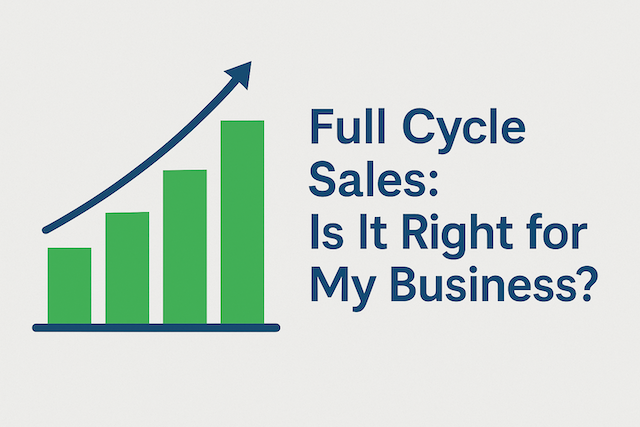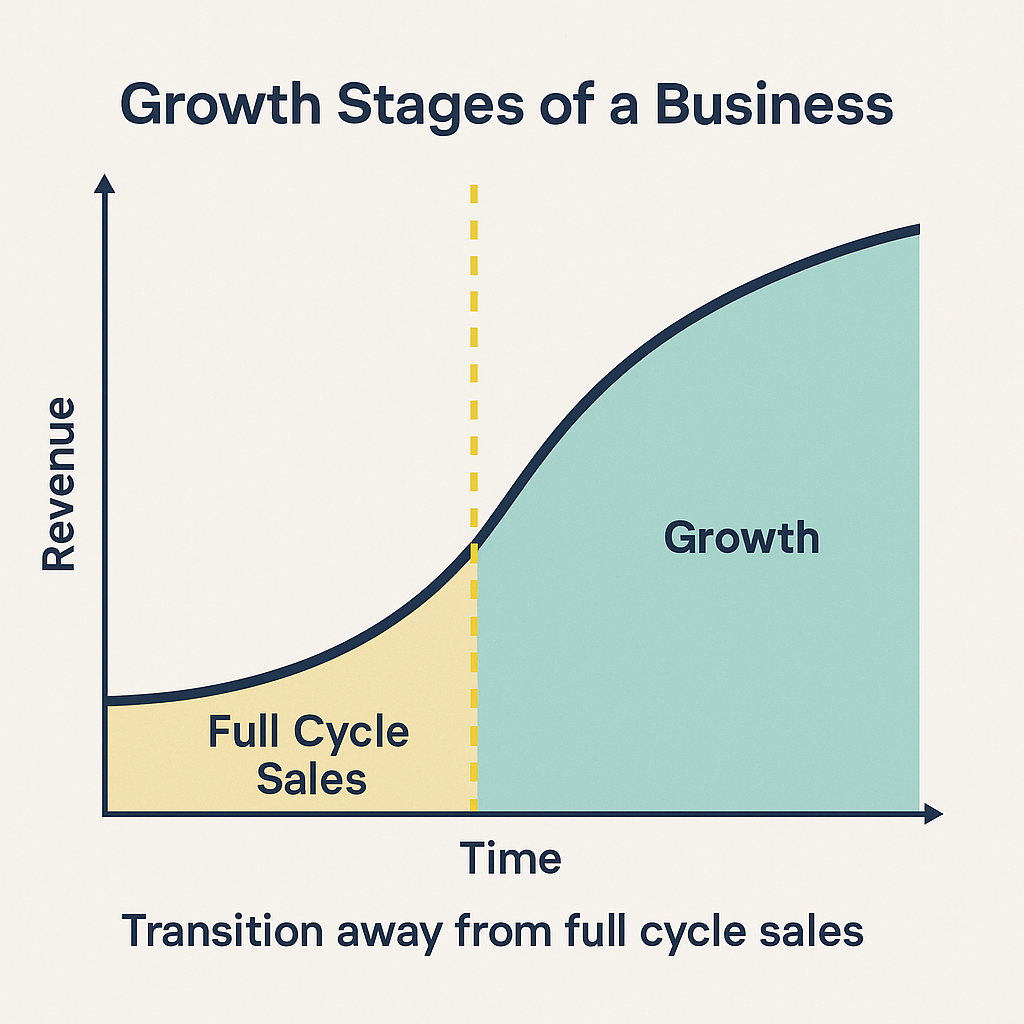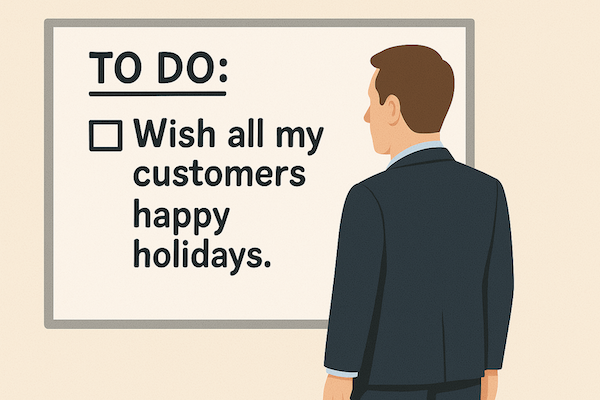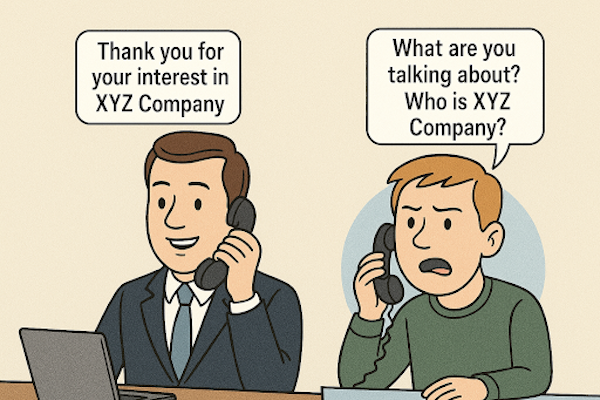Full Cycle Sales: Is It Right for My Business Today?


As your business grows, your sales strategy must evolve. One crucial decision for a B2B company is whether to adopt or move away from a full cycle sales model. When should this decision be made?
Lets dive into what full cycle sales is, why it is being embraced more frequently by b2b companies, and when it is no longer practical.
1. Full Cycle Sales Explained
In a full cycle sales model, a single sales executive or a small team of sales executives manages the entire sales process. They handle everything from lead generation to closing and even post-sale follow-up. Using a basic sales process, they prospect, qualify, present, negotiate, and close. It’s a cradle-to-close approach offering simplicity and ownership.
Smart early-stage businesses, often from pre-revenue to $10M in annual revenue, will hire a full time or fractional CRO, VP of Sales, or head of sales to run the full sales cycle and add resources until it no longer fits. This is not a job for a CRO or VP of Sales from a large enterprise, where the role involves managing from the sidelines. Full cycle sales demands leaders who are strategic and hands-on, closers who actively engage in every stage of the process.
2. Why Many B2B Companies Are Embracing It
The rise of automation, AI tools, integrated CRMs, and lean go-to-market strategies has made full cycle sales more practical and appealing, especially for early-stage or bootstrapped businesses. Founders of businesses in the $0–$10M range embrace full cycle sales leaders because they need results, not expenses they aren't ready for yet. Founders need:
Execution Over Oversight: Someone who can generate leads, close deals, and build the pipeline, not just manage others.
Resource Efficiency: Hiring one seasoned professional who can do it all is more cost-effective than prematurely building an entire sales team.
Speed and Agility: Full cycle sales leaders bring speed, adaptability, and customer insight, helping founders iterate faster.
Hands-On Leadership: Founders value leaders who own outcomes, not just strategy, leading by example.
Proven Builders: These leaders close deals and lay the groundwork for growth by establishing sales processes, playbooks, and pipeline discipline.
In short, founders hire full cycle sales leaders and professionals because they’re doers who deliver, not just directors with resumes highlighting accomplishments in global sales organizations.
3. When Full Cycle Sales Is No Longer Practical
As your company scales, the complexity of your pipeline, buyer personas, and deal size usually outgrow the full cycle sales model.
When does this occur? It varies based on business model and vertical. Common times for change include:

Achieving Major Revenue Milestones: Consistently reaching $10M+ in Annual Recurring Revenue.
Funding: New funding raised to accelerate growth will have a significant impact.
Team Expansion: Adding specialized roles like Business Development Representatives (BDRs), Account Executives (AEs), and Customer Success (CS).
Targeted Vertical Expansion: Expanding into enterprise segments or new markets.
Again, adopting a full cycle sales strategy is ideal for scrappy startups and growing SMBs, but it’s not a forever strategy. Like your business, your sales structure must scale.
With growth, role specialization and process rigor become essential. Handoffs become necessary, not optional. The key is knowing when to evolve and having experienced sales leadership to achieve desired goals.
For additional sales tips, sales insights, and revenue growth best practices, visit Justellus’ Sales Growth Blog.




